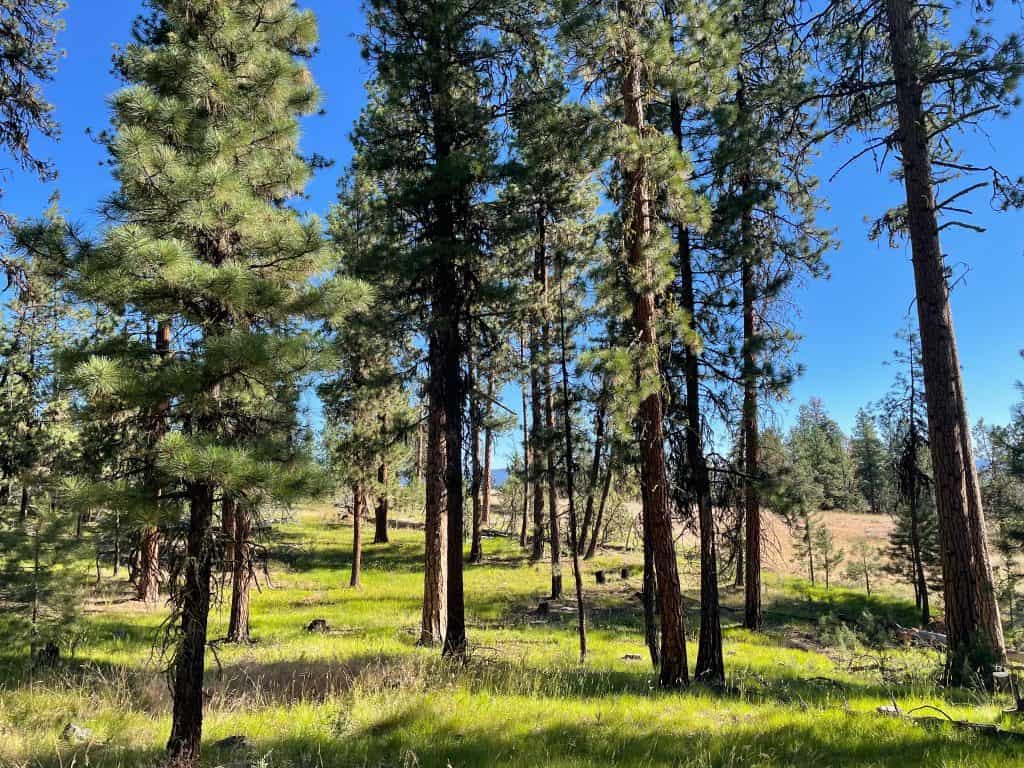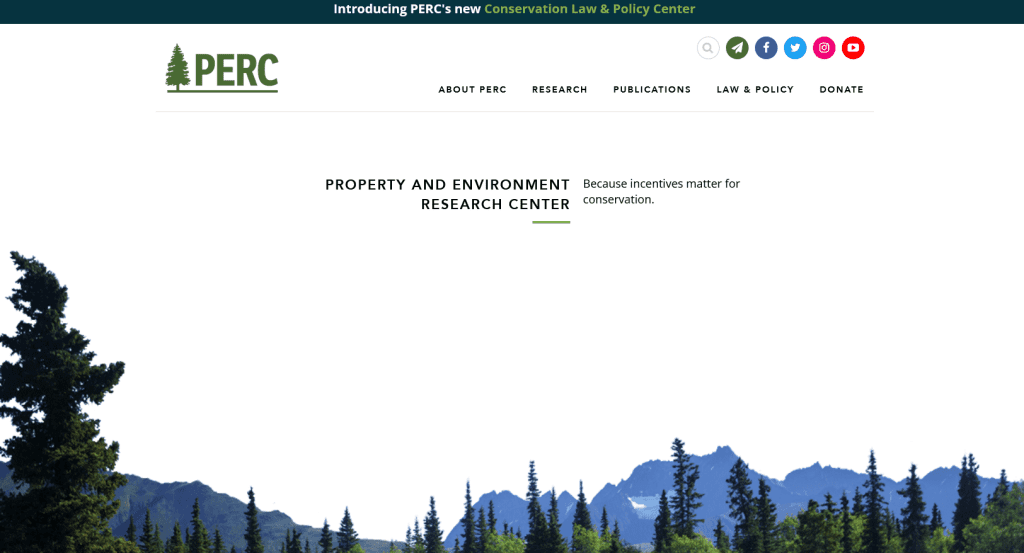Court-world has gotten a little busy lately, with some interesting cases.
Court decision in Capital Trail Vehicle Association v. U. S. Forest Service (D. Mont.)
On March 10, the district court determined that the Helena-Lewis and Clark National Forest had complied with NEPA, NFMA and the Travel Management Rule in adopting the Forest’s Travel Plan. Plaintiffs were local nonprofit organizations that promote recreational motorized off-highway vehicles, and they objected to the Travel Plan’s restrictions on OHV use.
(The case addresses an interesting point that I’ve seen raised in relation to closing routes to motorized or mechanized uses – that there would be impacts on other users of concentrating that use in fewer areas. Citing a 1996 9th Circuit case, Bicycle Trails Council of Marin v. Babbitt, which held that “NEPA does not require that an agency take into account every conceivable impact of its actions, including impacts on citizens’ subjective experiences,” this court concluded that possible overcrowding “does not qualify as an ‘environmental effect’ for the purposes of the NEPA cumulative effects analysis.” It also added, “Adverse impacts caused by more concentrated OHV use may occur regardless because of the increasing demands on National Forests …”)
Court decision in Alliance for the Wild Rockies v. Cooley (D. Mont.)
On March 15, the district court ruled that the U.S. Fish and Wildlife Service unreasonably delayed implementing its plan from 23 years ago to introduce grizzly bears into the unoccupied Bitterroot recovery zone, and failed to prepare a supplemental environmental impact statement based on new information about recent occurrences of grizzly bears in this ecosystem. The court required the FWS to do the latter. (The article has a link to the opinion.)
Notice of Intent to sue
On March 16, the Center for Biological Diversity, WildEarth Guardians, and Friends of the Earth notified the Department of the Interior and the BLM of their intent to sue under the Administrative Procedure Act for failure to respond within a reasonable time to their “Petition to Reduce the Rate of Oil and Gas Production On Public Lands and Waters to Near Zero by 2035” submitted in January, 2022. The petition “provides a policy framework for managing the decline of federal oil and gas production to near zero by 2035.” Said Taylor McKinnon with the Center for Biological Diversity, “The climate deadline to end oil and gas extraction in the U.S. is 2034, and the natural place to start is on land the federal government controls.”
Proposed listing
On March 17, in response to a Center for Biological Diversity lawsuit, the U.S. Fish and Wildlife Service proposed protection for the Texas heelsplitter (endangered) and Louisiana pigtoe (threatened) found in five southern states, and designated 1,860 river miles as critical habitat. The proposed rule states, “With regard to silvicultural operations that occur on forested areas across the range of the species, we recognize that private timber companies routinely implement State-approved best management practices. However, it is important to recognize that while BMPs reduce timber harvest impacts, they do not eliminate impacts; therefore, sensitive species and their habitats may still be impacted even when BMP guidelines are followed.” (The news release includes a link to the proposed rule.)
Court decision in Texas v. EPA (S.D. Tex.)
On March 19, the district court issued a preliminary injunction to temporarily halt the enactment of the Biden administration’s new waters of the United States (WOTUS) rule within the borders of Texas and Idaho. On March 20, the rule became effective throughout the rest of the United States. Background on this issue about the scope of the Clean Water Act and other related litigation is included here. (The article includes a link to the opinion.)
Motion for a preliminary injunction in Center for Biological Diversity v. U. S. Forest Service (D. Mont.)
On March 20, the Center and four other conservation groups asked the district court to enjoin the construction of logging roads for the Knotty Pine Project on the Kootenai National Forest. The project would allow more than 5,000 acres of commercial logging over 10 years, and the groups oppose the project because all but 1,200 acres of the project lies within core habitat of the Cabinet-Yaak Grizzly Bear Recovery Area. The lawsuit was filed last June. Here is some additional background.
Court decision in WildEarth Guardians v. U. S. Forest Service (D. Idaho)
On March 21, the district court held that the Forest Service had not violated ESA with respect to the use of bait for hunting black bears in Idaho and Wyoming. The plaintiffs were concerned about effects on grizzly bears of baiting for black bears. The Forest Service generally allowed this practice on the national forests based on a 1995 national policy that had replaced the practice of issuing individual special use permits for bear-baiting, and allowed states to regulate. The history of the bear-baiting policy is complicated and included prior consultation on grizzly bears that was withdrawn, but the court specifically found that the 1995 policy was not an agency action and did not establish future criteria for action (that did not already exist), and therefore consultation under ESA was not necessary,
(But what if the agency action that allows states to regulate bear-baiting is the forest plan, which is where forest-level management policy is considered and decided, and where some forest plans have included direction to regulate hunting? Forest plans are subject to ESA consultation and reinitiation requirements.)
Notice of intent to sue
On March 22, the Center for Biological Diversity and Nokuse Education, Inc. filed a formal notice of their intent to sue the U.S. Fish and Wildlife Service for denying Endangered Species Act protections to the eastern population of gopher tortoises in 2022. These gopher tortoises have allegedly lost 97% of the longleaf pine savannas they historically inhabited in Florida, Georgia, South Carolina and most of Alabama. (Gopher tortoises in limited parts of Louisiana, Mississippi and western Alabama are already protected by the ESA.)
Settlement in Center for Biological Diversity v. Daugherty (D. Or.)
On March 23, the Center for Biological Diversity announced settlement of this lawsuit against the Oregon Department of Forestry for the incidental take of coho Salmon in the Tillamook and Clatsop State Forests. The settlement will increase no-cut buffers around streams to 120 feet and increase the number of non-fish bearing and seasonal streams that receive protections. It will also require an inventory of forest roads in the next five years. Both of these conditions are expected to be included in a state-wide habitat conservation plan (which is also discussed here). (The news release includes a link to the agreement.)
Court decision
On March 23, the district court ruled against the Reno-Sparks Indian Colony, Summit Lake Paiute Tribe, and the Burns Paiute Tribe, who argued that the Bureau of Land Management violated several laws when it permitted the Thacker Pass lithium mine to Lithium Americas. In particular they object to the tribal consultation, as discussed here. Construction has begun.
- Fire damage claims
Court decision in Strawberry Water Users Ass’n v. U. S. A. (D. Utah)
On March 24, the district court dismissed plaintiff’s claims of negligence and trespass by the Wasatch-Cache and Uinta National Forests under the Federal Tort Claims Act alleging it failed to adequately suppress two wildfires in 2018, the Bald Mountain Fire and the Pole Creek Fire, which damaged their property. To avoid the discretionary function exception from such claims against the federal government, plaintiffs would have to show that the action taken was not within the employee’s discretion pursuant to agency policy. The court cited forest plan guidelines for wildfire use, a “Default Initial Fire Response Map,” and national fire policy and guidance in holding that the agency actions met the requirements for a discretionary function exception. The court admonished plaintiff’s attorney for trying to distinguish this case from binding precedents by, “blatantly twisting the government’s written policy statements to make the case that the Forest Service intended to burn non-National Forest lands. Here is some background information.
Plaintiff attempted to attack the cited map, which allowed wildfire use in these areas, for not complying with the NEPA process when it was adopted, but NEPA violations are outside of the scope of the Federal Tort Claims Act (and therefore damages could not be recovered for this procedural claim, even if valid). (This court refused to address the merits of the NEPA claim, but I believe that the development of a map that established different management of fires in one area from another should have followed the NFMA forest planning (amendment) process, including NEPA. There is no mention of the public participation in the decision to potentially allow wildfire use, but it seems like there would have been a lot of interest.)
Court decision in Schurg v. United States (9th Cir.)
On March 28, the appeals court held that determining how to consult with private landowners during the Lolo Peak Fire about fire suppression activities on their properties near the Lolo National Forest “was precisely the type of decision the discretionary function exception was designed to shield,” and denied their damage claims under the Federal Tort Claims Act.






